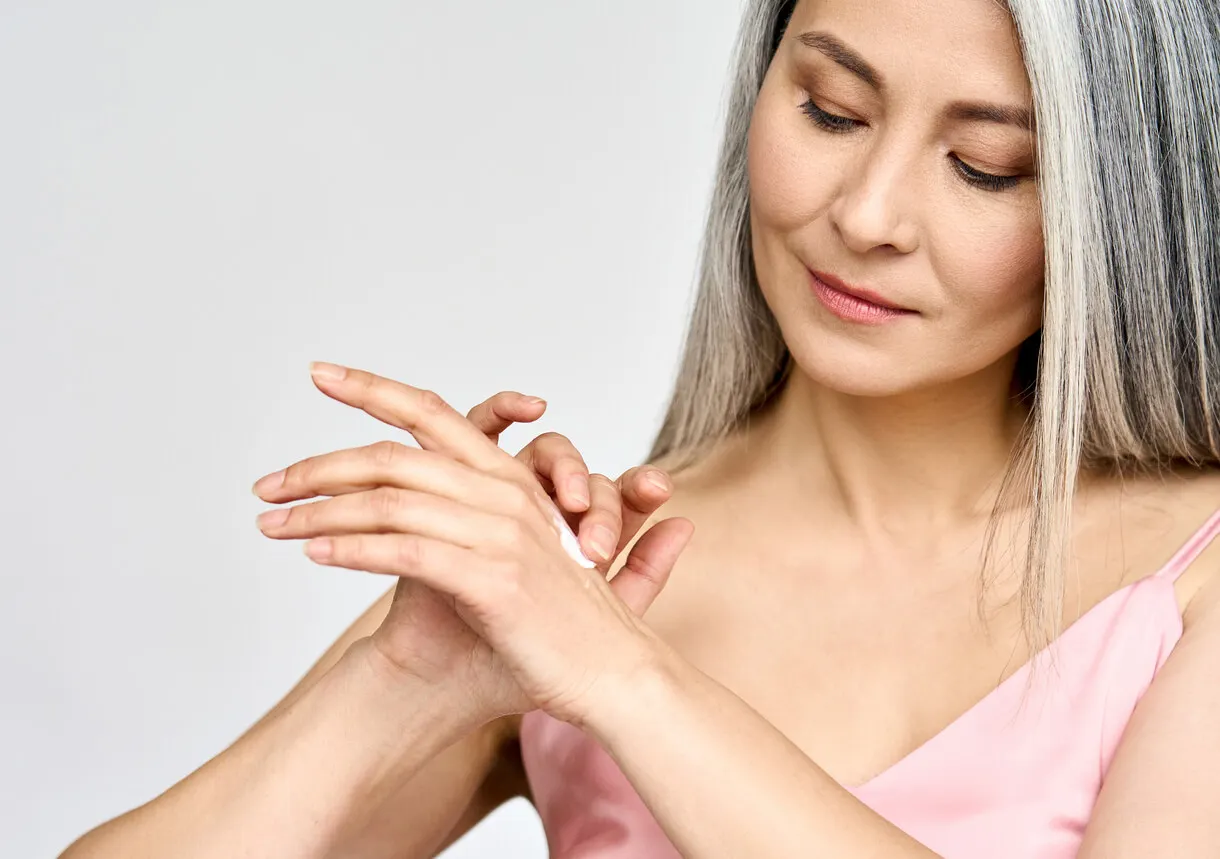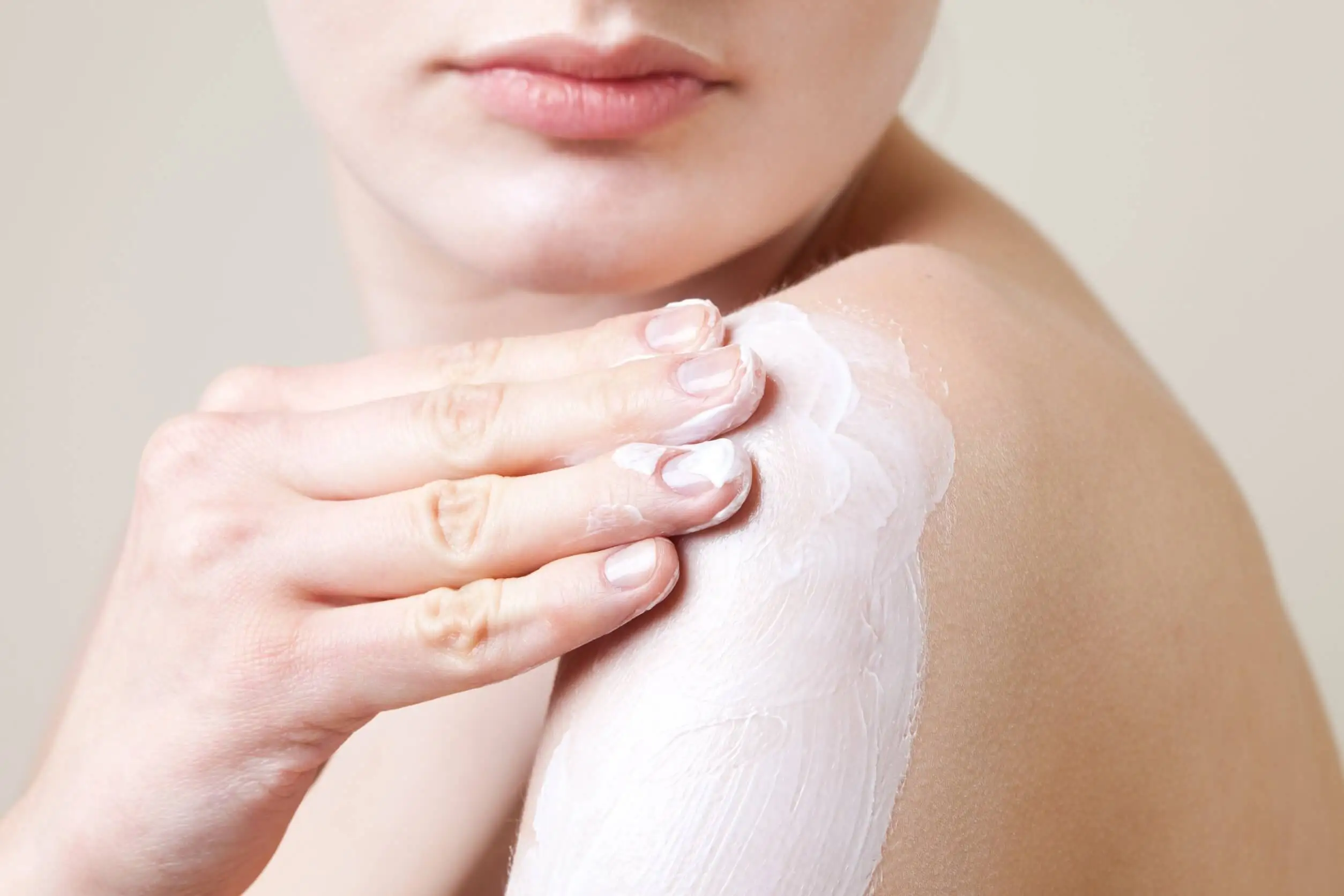Day and Night Creams: What Are Their Differences?


Reviewed and approved by the nurse Leidy Mora Molina
The health of your skin has a lot to do with what you eat, with your habits, and with the day and night creams that are part of your skincare. On this last point, there’s a common misconception that both substances are the same.
If the products require instructions to be used during the day or at night, it’s because only by following these instructions will you obtain the desired effects. In the particular case of creams, whether for day or night, they share a similar moisturizing function.
As The University of Tennessee Medical Center explains in a publication, our skin needs daily hydration and regular attention. In this way, it stays young, blemish-free, and healthy. You achieve this if you choose cosmetics that meet the requirements of your particular skin type and if you apply them on the right schedule.
What is day cream?
Day creams are substances that concentrate a few active ingredients. As the name indicates, they’re formulated for daytime use and intense hydration and nutrition during this period.
In addition, their properties represent an important contribution of vitamins and antioxidants. They prevent wrinkles and smooth and promote elasticity.
The consistency of day creams is more liquid. This is in order to accelerate absorption: they fit very well under makeup.
Dan creams are cosmetics that protect against environmental pollution and radiation. Although they are creams that contain a sun protection factor (SPF), this doesn’t mean that they can replace sunscreen.
We think you may be interested in reading this, too: Mandelic Acid: What Is It and What Are its Benefits for the Skin?
What is night cream?
Night creams are cosmetics that you apply with the purpose of avoiding interaction with sunlight so that cell regeneration can take place without any inconveniences. These preparations usually contain acidic ingredients.
The substances do recuperative and beautifying work while you rest. Applying these creams during the day, on the other hand, may cause hyperpigmentation after sun exposure.
Night creams don’t have SPF and take longer to penetrate. They’re ideal in the treatment of dry skin, with spots affected by expression lines.

The main differences between day and night creams
Apart from the time when both products should be applied, other variations between day and night creams are as follows.
The composition
The basic composition of day creams undoubtedly includes SPF. The Skin Cancer Foundation points out that photoaging is responsible for 90% of visible changes in the dermis and is a direct result of sun damage accumulated over a lifetime.
This is the consequence that daytime formulas seek to prevent. To this end, they’re often made with hyaluronic acid, urea, collagen, or vitamin E. On the other hand, the main ingredients in night creams are usually active ingredients such as vitamin C and retinol.
The journal Actas Dermo-Sifilográficas argues that the dermatological use of vitamin C affects the production of metalloproteinases after multiple exposures to UV radiation. This micronutrient contributes to the skin, preventing the early appearance of signs of aging, pigmentation disorders, and loss of tone.
As for retinol, Clínica Alemana points out that it’s an anti-aging ingredient that offers the following advantages:
- It minimizes blemishes
- It promotes elasticity
- Vitamin C reduces wrinkles
- It reduces acne breakouts
Like this article? You may also like to read: 5 Tips to Protect the Skin Against the Effects of Air Conditioning
The goal
At night, the skin takes advantage of rest to regenerate. During the day, what it really needs is sun protection.
This means that while you sleep, the objectives are to nourish and repair. Throughout the day, the purpose of creams is to form a barrier so that water does not evaporate from the skin and thus neutralize environmental toxins.
The texture
Night creams are heavier, while day creams have fewer components and aren’t as thick. This doesn’t mean that one is more potent than the other, but rather that the textures result from the concentration of ingredients.
Their absorption is different
During the day, creams are absorbed more quickly by the skin since they’re light substances. In the evening, on the other hand, the thickness slows down the process.
Regardless of the time it takes for the creams to penetrate, if applied at the right moment, both types of creams benefit the skin.
Their application is different
Day creams are applied in small quantities, gently massaging the skin. At night, you spread them by moving your fingertips in circles on the skin and following an upward rhythm.

What happens to your skin if you reverse the use of day and night creams?
Switching the timetable of creams has consequences. What happens is that the skin doesn’t receive the benefits it needs at particular times, and it becomes an uphill battle in the fight against the signs of aging.
Remember that these products each have a special composition, and if you reverse the order, they won’t be effective. A skincare routine is beneficial if you approach the objectives by separating day and night cosmetics.
The economic aspect is one of the arguments for using the same type of cream in the two shifts. After all, it means only one expense. In these scenarios, consult your dermatologist about a dual-use product.
All cited sources were thoroughly reviewed by our team to ensure their quality, reliability, currency, and validity. The bibliography of this article was considered reliable and of academic or scientific accuracy.
- Fotoenvejecimiento: lo que necesitas saber sobre el otro tipo de envejecimiento. Fundación Contra el Cáncer de Piel. Estados Unidos; 2019. https://www.skincancer.org/blog/photoaging-what-you-need-to-know/
- La importancia de la hidratación. The University of Tennessee Medical Center. Estados Unidos; 2018. https://www.utmedicalcenter.org/es/the-importance-of-moisturizing/
- Retinol, el mejor ingrediente antiedad y del cuidado del acné. Clínica Alemana. Chile; 2022. https://www.clinicaalemana.cl/articulos/detalle/2022/retinol-mejor-ingrediente-antiedad-cuidado-del-acne
- Valdés F. Vitamina C. Actas Dermo-Sifilográficas. Vol. 97. Núm. 9. pp. 557-568. España; 2006. https://www.actasdermo.org/es-vitamina-c-articulo-13095269
This text is provided for informational purposes only and does not replace consultation with a professional. If in doubt, consult your specialist.








